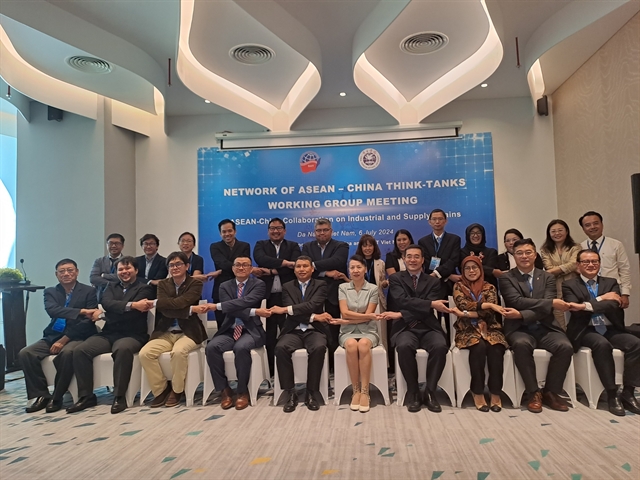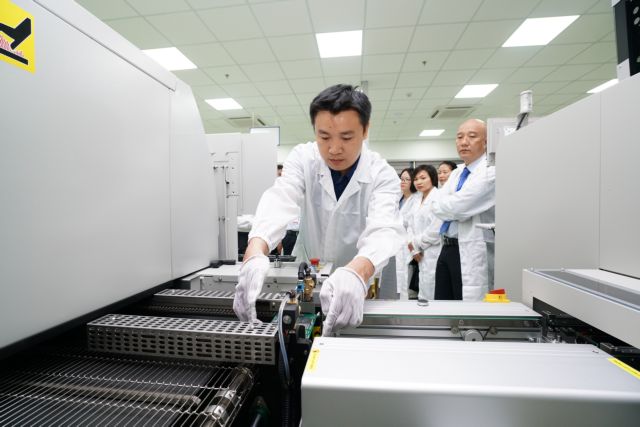 Media-OutReach Newswire
Media-OutReach Newswire

 |
| Participants at the Network of ASEAN-China Think-Tanks Working Group Meeting in Đà Nẵng. ASEAN-China will boost collaboration on Industrial and Supply Chains. — VNS Photo Công Thành |
ĐÀ NẴNG — ASEAN-China have been each other's largest trading partners, reaching an impressive US$911.7 billion in 2023, making ASEAN and China become the largest trading partners for many decades.
That was the message from Director-General of Institute for Foreign Policy and Strategic Studies of Việt Nam, Vũ Lê Thái Hoàng speaking at the Network of ASEAN-China Think-Tanks Working Group Meeting:’ASEAN-China Collaboration on Industrial and Supply Chains’ in the central city.
Hoàng stressed that China has become ASEAN's largest source of imports, particularly for industrial goods and components, and has emerged as the third-largest source of foreign direct investment in ASEAN, with total Foreign Direct Investment (FDI) reaching $18.65 billion in 2022.
Chinese overseas direct investment in ASEAN manufacturing reached $8.2 billion, accounting for 44 per cent of total ODI flows, he said.
“Over the past two decades, ASEAN countries and China have successfully fostered closer industrial and supply chain connectivity," Hoàng said.
"These figures underscore the deepening economic ties and the seamless integration of ASEAN-China supply chains, laying a robust foundation for future collaboration.”
Hoàng also emphasised that ASEAN and China will be facing three major challenges: the increasing fragmentation of the global economy; the existential threats posed by climate change and environmental degradation, and the transformative impact of emerging technologies such as artificial intelligence in the third decade of cooperation.
ASEAN and China can drive the development of new industries, foster the adoption of green technologies, and create inclusive economic opportunities.
He added ASEAN and China should seek harmony and cohesion between the ASEAN Community Vision 2045, the Master Plan on ASEAN Connectivity 2025 (MPAC 2025) and China's global initiatives such as the Belt and Road Initiative (BRI).
Alexander Chandra, Assistant Director, Analysis & Monitoring on Trade, Industry, and Emerging Issues Division of the ASEAN Secretariat, said ASEAN’s economic growth is projected to sustain at 4.6 per cent this year and 4.7 per cent next year – supported by strong domestic demands and tourism in recovery sector.
 |
| An engineer checks a production line of printed circuit board at a factory in Đà Nẵng Hi-tech Park. Đà Nẵng is expected to develop as a centre of semiconductor, AI, logistics in ASEAN, and an entrance of ASEAN-China partnership. Photo courtesy of Quang Huy |
“ASEAN also continues to be a major player in global trade, sitting as the third largest with total trade valued at $3.6 trillion, or 9.5 per cent of global trade," he said.
"Moreover, ASEAN maintains its position as the preferred global investment destination, illustrated by the staggering $229.8 billion of foreign direct investment (FDI) in 2023, the highest among developing economies followed by China.
“At the same time, China continues to retain its position as ASEAN’s largest trading partner since 2009, whilst ASEAN has been China’s largest trading partner for three consecutive years since 2022.
“It is imperative for both ASEAN and China to improve its supply chain resiliency as China continues to be the largest manufacturer in the world for 14th consecutive year and that its production exceeds that of the nine next largest manufacturers combined, ASEAN’s today offers a strong complementarity with China’s production stage, supported by strong demographic dividends and competitive workforce.”
Professor Gao Fei, Vice President of China Foreign Affairs University (CFAU) said: "NACT is the Track II mechanism that brings together academia and practitioners of ASEAN countries and China to conduct joint researches on a regular basis.
"NACT has a solid three-level working mechanism including Country Coordinators’ Meeting, Working Group Meeting, and Annual Conference, and has achieved enormous social and policy impacts.”
He said industrial and supply chain collaboration between ASEAN and China is not only pivotal for regional economic stability but also for global economic resilience.
The professor added: “Initiatives such as the Regional Comprehensive Economic Partnership (RCEP) and the ASEAN-China Free Trade Area (ACFTA) 3.0 Upgrade Negotiation are testament to our commitment to deepening economic integration and fostering a more interconnected and interdependent regional economy.”
Vice chairman of Đà Nẵng City’s People’s Committee, Hồ Kỳ Minh said the beach hub plays as an entrance way for the ASEAN-China partnership, and the city has been designing it a key sea-based economic centre in Việt Nam and ASEAN.
Minh said Đà Nẵng has been given a greenlight by the National Assembly of Việt Nam for developing a pilot ‘Free Trade Zone’ – an attraction of investment from regional and worldwide partners – with a wider comfortable policy-making mechanism, the introduction of Municipal administration, the first of its kind in Việt Nam. VNS




